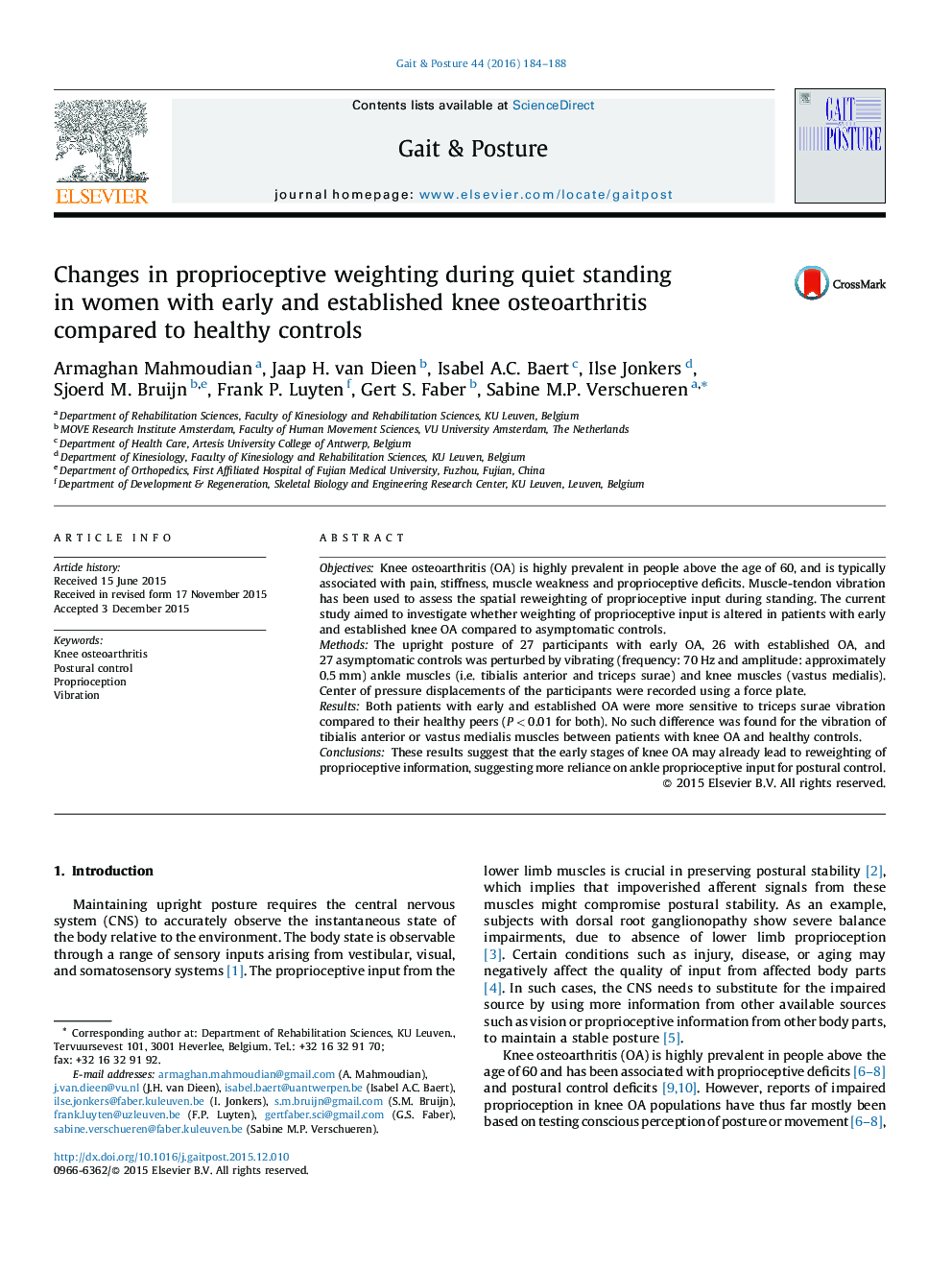| کد مقاله | کد نشریه | سال انتشار | مقاله انگلیسی | نسخه تمام متن |
|---|---|---|---|---|
| 4055556 | 1603851 | 2016 | 5 صفحه PDF | دانلود رایگان |
• Proprioceptive deficits associated with knee OA severity were investigated.
• The relationship between proprioceptive weighting and accuracy was also studied.
• Early stages of knee OA may lead to reweighting of proprioceptive information.
• No significant correlation among proprioceptive weighting and repositioning error.
ObjectivesKnee osteoarthritis (OA) is highly prevalent in people above the age of 60, and is typically associated with pain, stiffness, muscle weakness and proprioceptive deficits. Muscle-tendon vibration has been used to assess the spatial reweighting of proprioceptive input during standing. The current study aimed to investigate whether weighting of proprioceptive input is altered in patients with early and established knee OA compared to asymptomatic controls.MethodsThe upright posture of 27 participants with early OA, 26 with established OA, and 27 asymptomatic controls was perturbed by vibrating (frequency: 70 Hz and amplitude: approximately 0.5 mm) ankle muscles (i.e. tibialis anterior and triceps surae) and knee muscles (vastus medialis). Center of pressure displacements of the participants were recorded using a force plate.ResultsBoth patients with early and established OA were more sensitive to triceps surae vibration compared to their healthy peers (P < 0.01 for both). No such difference was found for the vibration of tibialis anterior or vastus medialis muscles between patients with knee OA and healthy controls.ConclusionsThese results suggest that the early stages of knee OA may already lead to reweighting of proprioceptive information, suggesting more reliance on ankle proprioceptive input for postural control.
Journal: Gait & Posture - Volume 44, February 2016, Pages 184–188
